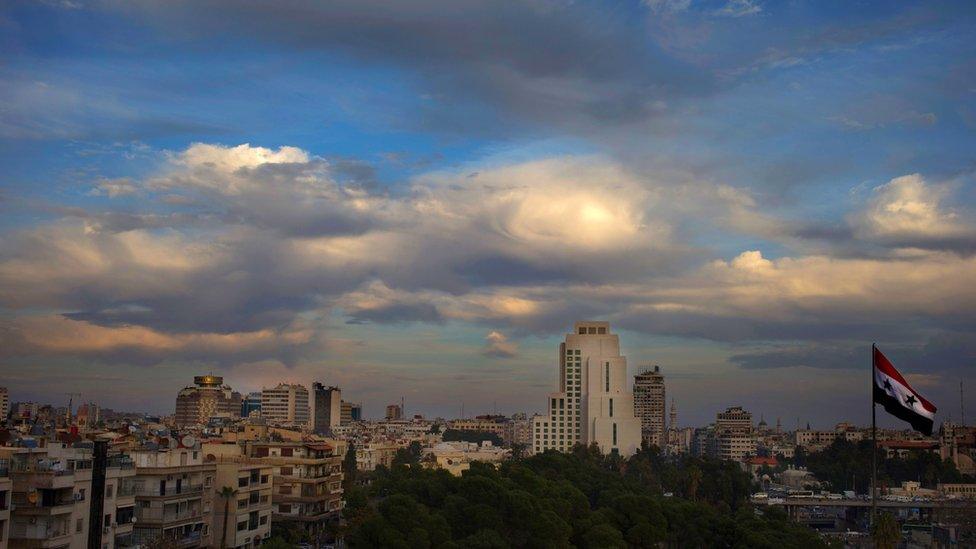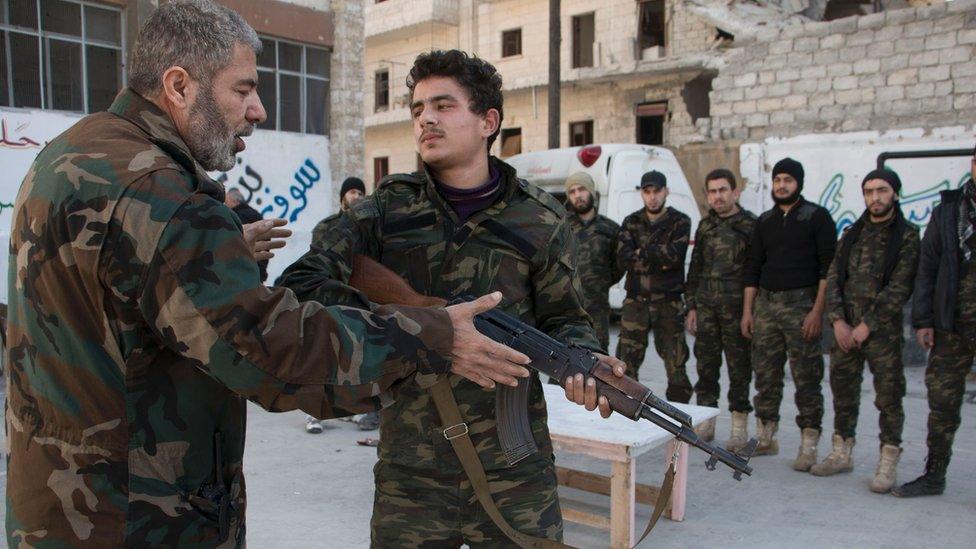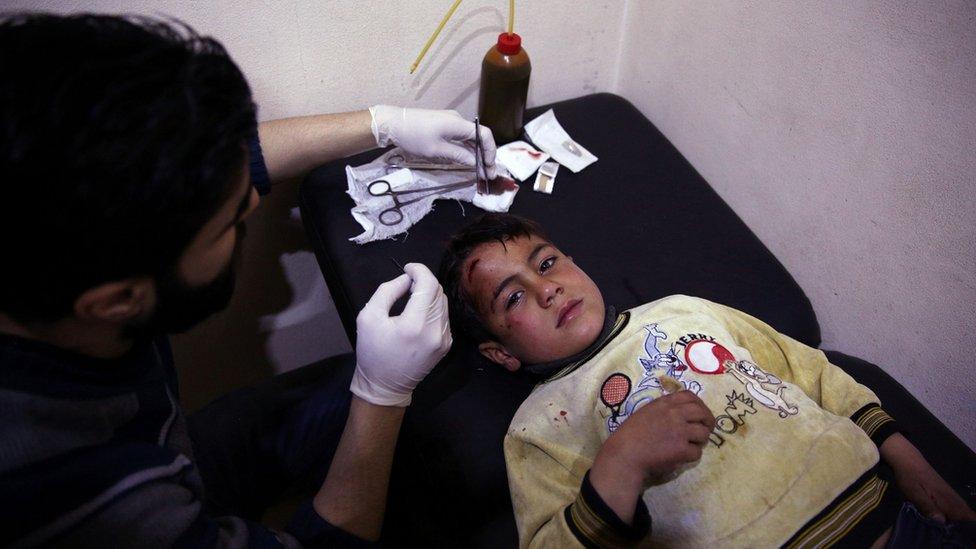Syria: Mixed verdict on fragile truce
- Published

The cessation of hostilities in Syria is holding rather better than many people might have imagined. Nonetheless it remains incomplete, partial, and fundamentally fragile. The key questions now are:
Can it be sustained?
To what extent can this pause be capitalised upon to bring aid and humanitarian relief to areas where it is so badly needed?
What will be the impact of renewed air strikes against the al-Qaeda-linked Jabhat al-Nusra and the so-called Islamic State (IS)?
And if the lull in the relative fighting can hold, what can be done to build upon this as a foundation to lead on to an embryonic diplomatic settlement?
It is still too early to get a clear sense of what is happening on the ground.
But after a lull on Saturday, air attacks on behalf of the Syrian regime look to have resumed on Sunday in the Aleppo area and in Idlib province.
It is not possible at this stage to say if the air attacks were carried out by the Syrian government or Russian warplanes.
The US-led campaign against IS is also continuing. On Saturday there was heavy fighting between Kurdish forces who struggled to throw back an IS offensive in and around the northern town of Tal Abyad.
Here, US air power appears to have had a decisive role.
The continued fighting is a reflection of the fact that there are multiple conflicts underway on the ground.
There is a war for the future control of Syria itself, which pits the Syrian regime and its allies against the rebels and their supporters like Turkey and the Gulf states
Then there is the war being waged by the West against IS
Lastly, there is the struggle between Turkey and the Kurds to contain a broader Kurdish expansion
Three problems
Problem number one is that the truce only applies to one of these conflicts - that between the Syrian regime and its rebel opponents.
It specifically excludes the campaign against IS and Jabhat al-Nusra.

The truce only applies to government and rebel forces (pictured)
So even in the best of outcomes, Russian and Western air attacks against these two groups will continue.
However, it must be said that up to now, Russia has carried out relatively few attacks against IS targets.
And this leads us on to problem number two.
The boundaries between these various conflicts in Syria are often vague and to varying degrees they overlap.
So, for example, the Syrian military has already suggested that it will not accept a ceasefire in the Damascus suburb of Daraya, where it argues the opposition forces are dominated by Jabhat al-Nusra.

Russia too argues that it has the right to continue air operations against UN-designated terrorist groups like al-Nusra.
But any taint of alliance with this group might well, in Moscow's eyes, open up rebel forces to Russian attack.
A map of Syria put out by the Russians suggests only very restricted areas in which Moscow believes that the ceasefire should hold.
The complexities of the fighting involving Kurdish groups in northern Syria prompts a third set of problems for any ceasefire.
Here, Kurdish fighters backed by both the Americans and to an extent the Russians, are making headway in the region bordering Turkey.

Turkey's PM Ahmet Davutoglu has made it clear that he will not allow any threats to Turkey's security
Alarm bells are ringing in Ankara.
And Turkish Prime Minister Ahmet Davutoglu has made it clear that any ceasefire would not be "binding for us when there is a situation that threatens Turkey's security".
"We will," he said, "take necessary measures against both the YPG (Kurdish fighters) and Daesh (IS) when we feel the need to."


Respite
This is all on the negative side of the balance sheet.
Clearly ordinary people might welcome the respite, especially if food and supplies can be delivered to towns and villages cut off up until now by the fighting.
This in a sense is the immediate litmus test for any partial ceasefire arrangement - will it help to alleviate the situation on the ground?
Hard-pressed rebel fighters might also welcome a period to pause and regroup.

Ordinary people will welcome the supply of food and aid
At a more strategic level, Russia may well see this as at least the start of a diplomatic endgame, one that recognises for now that the Assad regime - or something like it - is here to stay.
But if the experience of Russian diplomacy in Ukraine is anything to go by, we could be in for a lengthy period of abortive ceasefires and outbreaks of fighting, as Syrian government forces seek to expand and consolidate their positions.
"So far, so good" would seem to be the interim judgement. But the so-called "ceasefire" retains all of the flaws that were there at its inception.
In short, nobody is very optimistic that this truce will take hold.
US Secretary of State John Kerry has been especially honest in his appraisal of the situation.
He has begun to speak of a "Plan B" if the current diplomatic efforts fail.
But in explaining this to US senators, he noted that one often-suggested step - the establishment of a safe zone inside northern Syria - would require, according to Pentagon estimates, the deployment of as many as 15,000 to 30,000 troops.
And he warned that in the absence of progress towards peace, the situation in Syria could get "a lot uglier".
In a comment that raised just a few eyebrows, he seemed ultimately to countenance a redrawing of the map, noting that: "It may be too late to keep it as a whole Syria if we wait much longer."